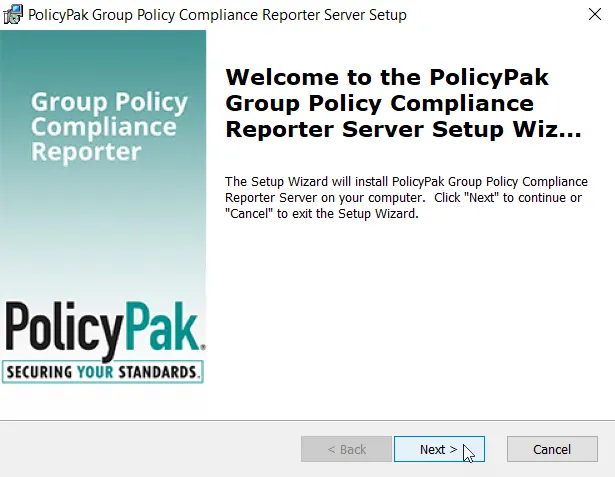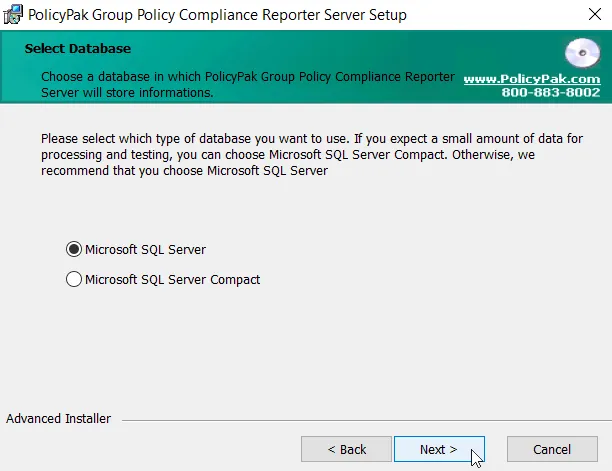Installation and Uninstallation
We recommend that installation of the GPCR Server Edition be on a server (Server 2008 R2 or higher). However, Endpoint Policy Manager GPCR in push mode doesn't need to be installed on a server at all, and could be installed on any machine (Windows 7 or higher). To start the installation, find the Endpoint Policy Manager GP Compliance Reporter (Server).msi file, as shown in Figure 36.

Figure 36. GPCR server MSI.
Step 1 – To install Endpoint Policy Manager GP Compliance Reporter, click on the MSI file and start the wizard (Figure 37).

Figure 37. The Endpoint Policy Manager Group Policy Compliance Reporter Server Setup Wizard.
Step 2 – Next, choose the domain group that will have rights to the Endpoint Policy Manager GPCR server as shown in Figure 38.
NOTE: To see a video on Compliance Reporter and specific group membership requirements, see the following link: Enhanced Security for Server.

Figure 38. Choosing the domain group that will have access to the GPCR server.
Step 3 – Then select which type of database you want to use (see Figure 39). You can choose Microsoft SQL Server Compact if you only expect a small amount of data for processing and testing. However, in most cases, Microsoft SQL Server is recommended.

Figure 39. Selecting the type of database.
Step 4 – Once the installation process is complete, close the wizard.
NOTE: If you need to uninstall Endpoint Policy Manager GPCR Server, use Add/Remove Programs and uninstall Endpoint Policy Manager. Then, remove
C:\ProgramData\PolicyPak\PolicyPak Group Policy Compliance Reporter Server and all subfolders.
Additionally, remove the Endpoint Policy Manager Group Policy Compliance Reporter (endpoint) license
from the Group Policy Object (GPO).